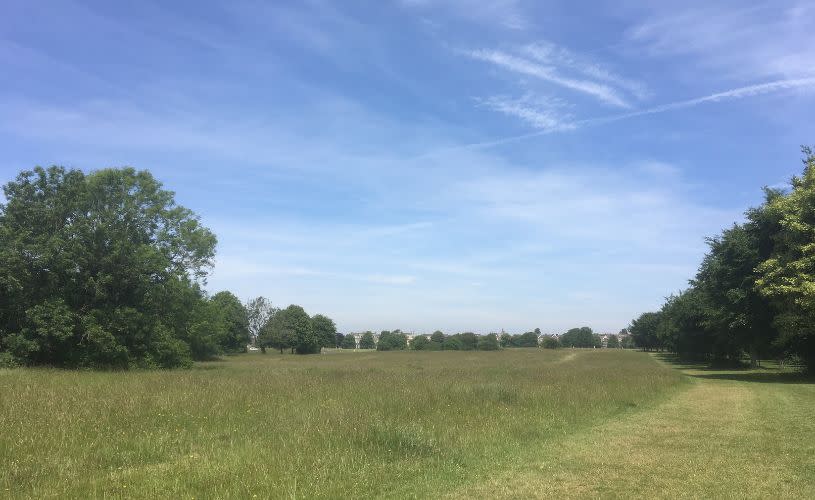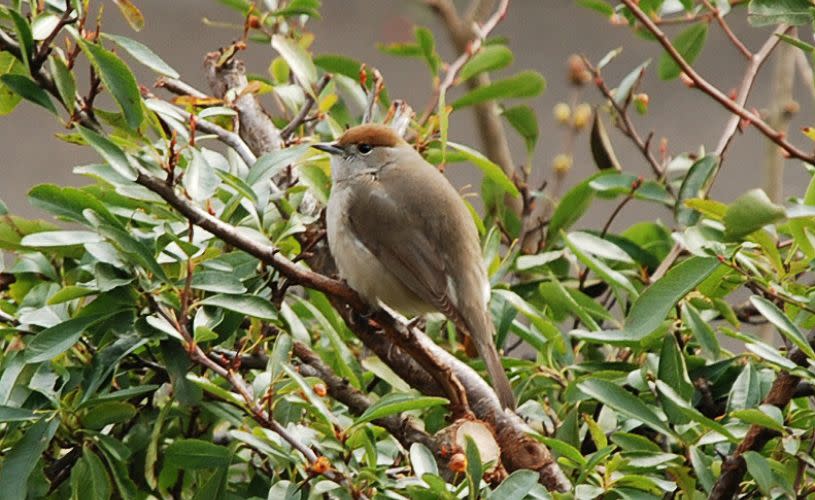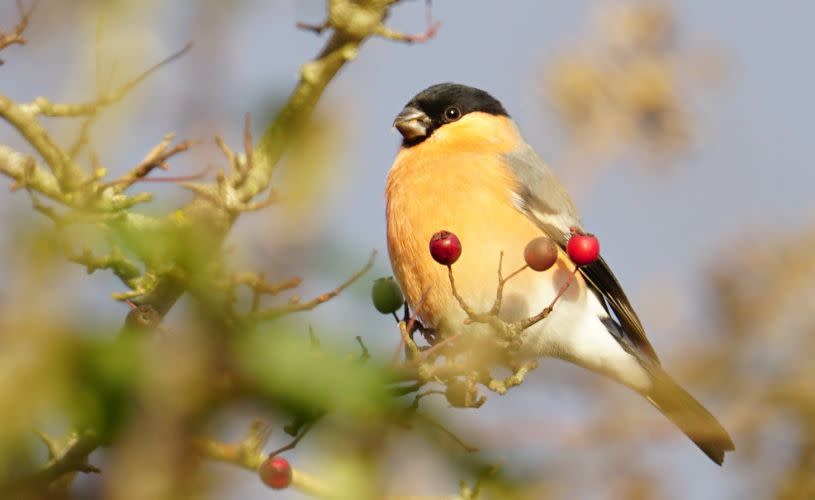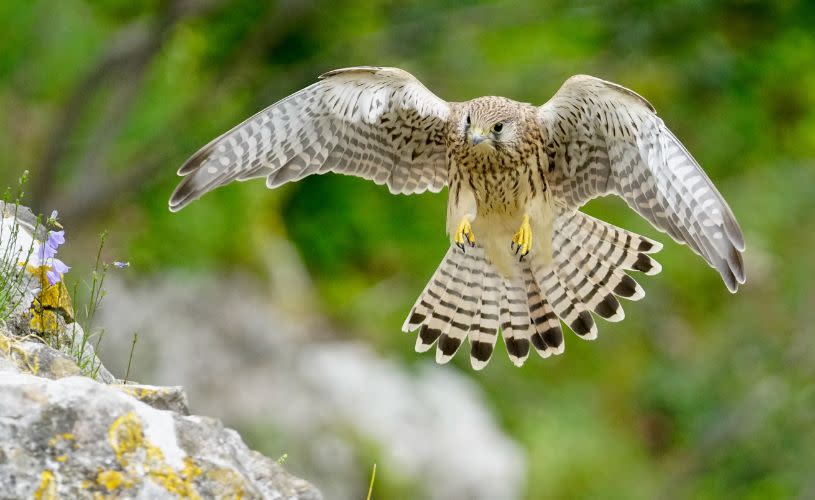The Downs and Avon Gorge are a mosaic of incredible habitats within one stunning landscape. One of the best things about this rich array of habitats is the diverse range of species they host! None more so than our bird species.
Birds are universally considered an ecological indicator as they inhabit a wide range of habitats where they find suitable shelter, food, space for reproduction, and interactions with their own or other species. In other words, if your habitat is healthy, you will have a diversity and abundance of bird species!
The best time to see and hear our birds is early to late spring as they claim their territories and look for a mate. Birds take a quiet moment through the summer months as they moult and regrow plumage for the winter. In the autumn, they come ‘back to life’ and find their singing voices once again, and as we head into winter, the smaller species will flock together in larger groups.

Image - Clifton Down
Promenade and Zoo Banks
Start at the Observatory overlooking the Suspension Bridge on the Clifton side of the bridge.
Head up to Clifton Observatory at the Clifton Village end of Clifton Down, then walk along the Promenade, cross over Bridge Valley Road and take a stroll along the path alongside the woodland at Zoo Banks. If you walk this early in the morning, you will enjoy a wonderful dawn chorus erupting as one by one our songbird species enter the orchestra.
Birds to listen out for are those which enjoy a woodland edge habitat, such as: robins all year round – listen for a melodic, watery song with pauses in between phrases; great spotted woodpecker drumming to display in the springtime; goldcrest singing at the very highest register all year round – sounding a bit like a squeaky wheel. You will know spring has arrived when you hear the blackcaps warbling their slightly jaggedy, flutey song – don’t be confused by the females, which have a brown cap! Other species to hear are the wren with its amplified trills and the great tit with its black head and ‘teacher’ song.

Image - Female blackcap. Credit Denice Stout
Scrub patches on Clifton Down
Start at the Rangers Pound, top of Pembroke Road in Clifton, crossing over Clifton Down Road.
As you leave the woodland behind you on Zoo Banks and head up onto the grassland plateau of Clifton Down, you will find it interspersed with patches of scrub. These can be big or small, and often contain a tree or trees at their centre with ‘scrub’ species around the tree. Scrub consists of small saplings, blackberry bushes, ivy, hawthorn, amongst other bush-like species and is a haven for small songbirds. See them flit from one patch to another for safety, gathering food from buds, berries, blossoms, and insects.
Listen out for another certain sign of spring – the chiff-chaff delivering its characteristic chiff-chaff song. Once you hear them, it’s hard to hear anything else! You’ll also hear the characteristic ‘wheeze’ of the greenfinch coming and the distinctive ‘bubbling’ and ‘raspberry blowing’ of goldfinches chatting to one another. In the winter months, look out for redwings feeding on berries with their distinctive under-wing red patch and a white eye stripe.
In the springtime, you might be lucky enough to see a male bullfinch perched in the scrub with its bright pink breast. This shy bird is seen every year, but likes to hide. And keep an ear out for the raven as they ‘croak’ from a high spot.

Image - Bullfinch. Credit Kathi Held
Clifton to Durdham Downs
Start in the middle of Ladies Mile and enjoy the scrub on either side, then turn to walk towards Sea Walls.
As you stride across the Downs from the scrub patches, across Ladies Mile and through the boundary into Durdham Down, keep your eyes peeled for flocks of long-tailed tits in the bigger trees hopping along the branches, hoovering up small invertebrates. Looking for all the world like little lollipops, they have a ‘see-see-see’ song to listen for.
Catch sight of the song thrush, perching all alone atop the taller trees – a medium-sized speckled-breasted bird with the most stunning song. A song thrush delivers up to 40-odd phrases, each of which it repeats two to four times – you will always know it’s a thrush from this repetition. Listen for blackbirds singing their individual melodic song and popping down from the scrub onto the short grassland to rummage for invertebrates in the soil and grass.
Other species to keep your eyes open for on this route are nuthatches – a very distinctively compact bird with a black eye streak spiralling up and down tree trunks as they rummage for their food. Hear them tapping on the trunks in winter to retrieve nuts hidden earlier in the year. The green woodpecker is now common on the Downs – hear it ‘laugh’ or yaffle as it swoops up and down between the bigger trees with a flash of red head and green body.

Image - Long-tailed tit. Credit Kathi Held.
Sea Walls
Start at Sea Walls, look out across the Avon Gorge and walk back up towards Stoke Road across the grassland.
Arriving at Sea Walls in March, you might be lucky enough to see the iconic pair of peregrine falcons courting with magnificent flying displays and food passes. They build their nest or ‘scrape’ every year in the cliffs, the young hatch and by June, juveniles are ready to learn how to fly, land and hunt from their parents. There is great joy to be had watching an adult peregrine showing its young how to ‘stoop’, the speedy dive a peregrine makes to catch its prey.
At least one family of kestrels are usually present in the Gorge with their fanned-out tails. Watch them hover in the wind as they pinpoint their prey with their eye. Buzzards soar up above you overhead, circling in the thermals.
Behind you on the short grassland, you will see a variety of gulls – lesser black-backed and herring - as well as jackdaws with their characteristic grey heads and ‘jack’ call.
In the spring and summer months, look out for swifts catching flies on the wing with their very distinctive anchor shape, which doesn’t change as they fly above you, unlike the swallow, which will close its wings as it flies. Both are breeding visitors from the hotter climes of Africa. Also in summer, you may find flocks of shiny starlings moving between trees and scrub patches, in between foraging for food on the ground.

Image - Kestrel. Credit Kathi Held.
About the author
Anna Stevens is the Avon Gorge and Downs Wildlife biodiversity engagement manager and carries out a monthly bird survey on the Downs.
Avon Gorge and Downs Wildlife is a multi-partner project which aims to secure the outstanding wildlife of the Avon Gorge, Clifton and Durdham Downs – to encourage awareness and understanding of this unique location and its importance for wildlife, people and local habitat.
Read more:





